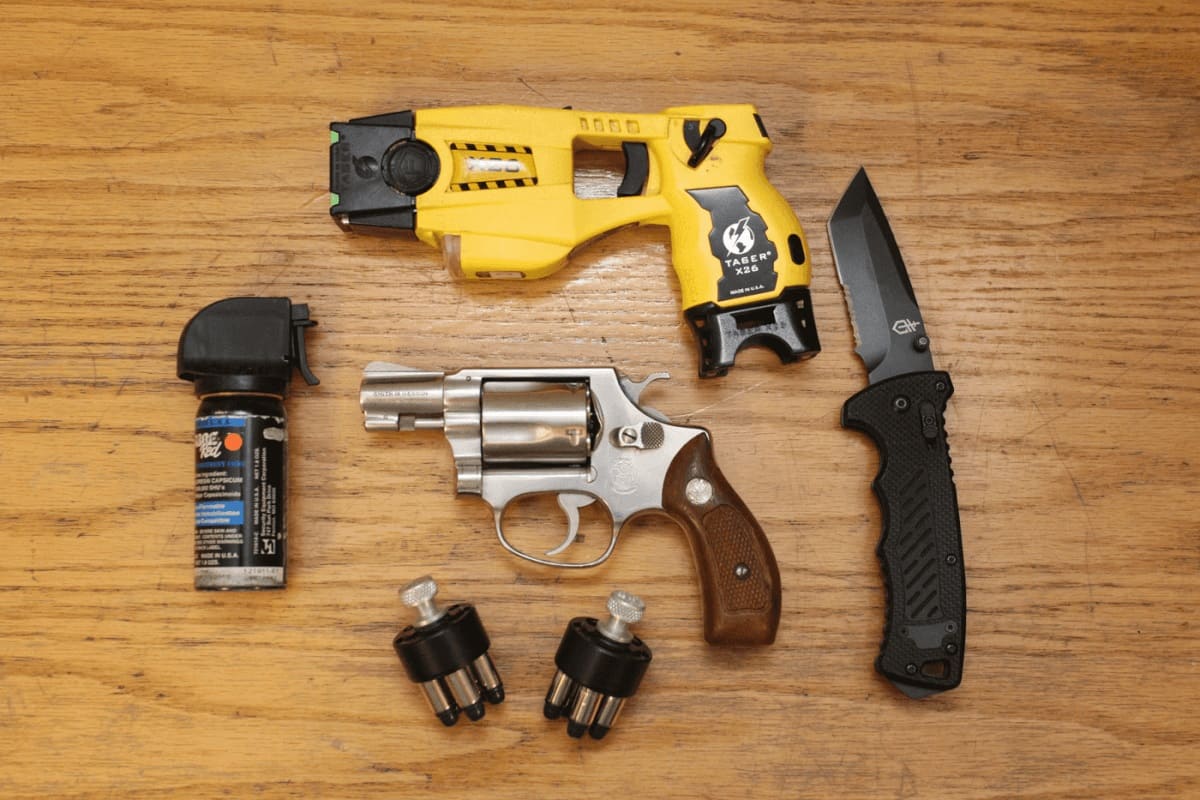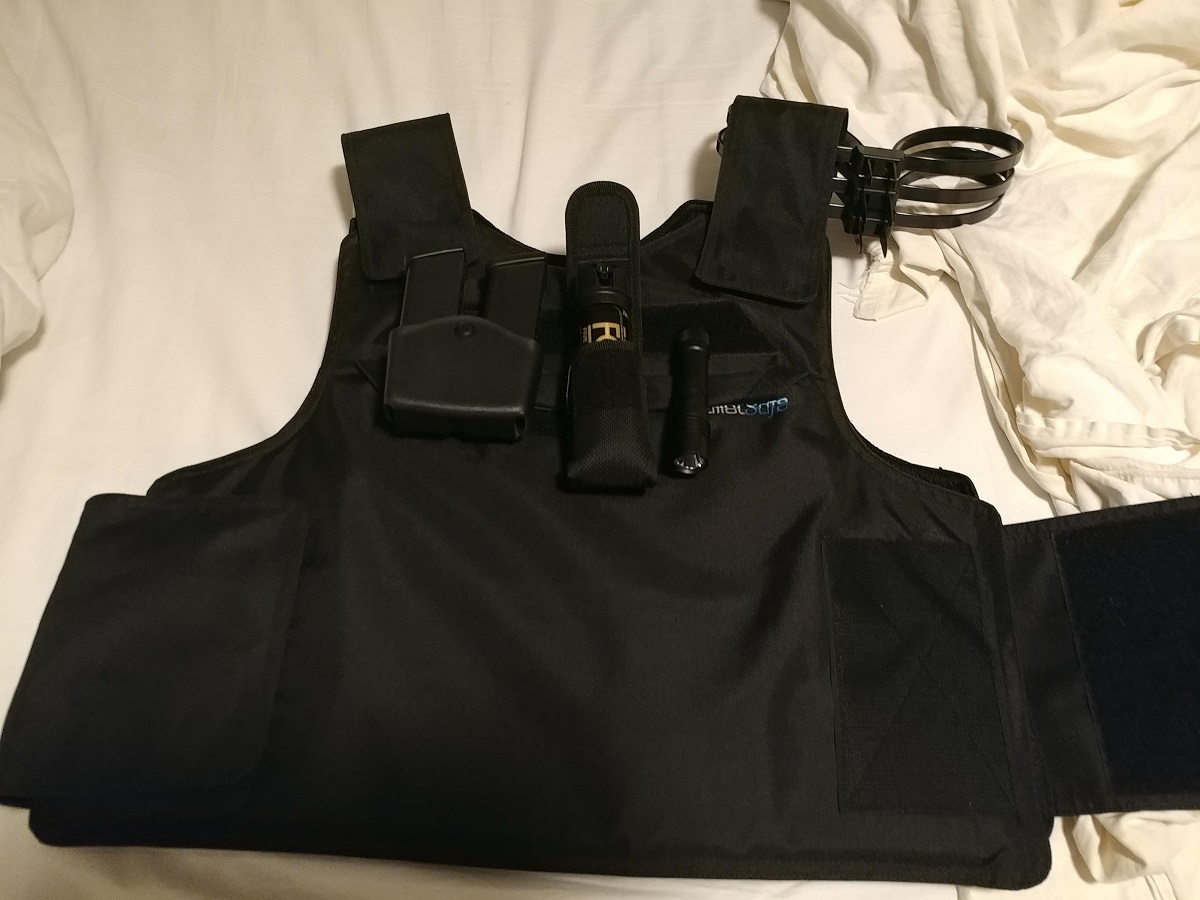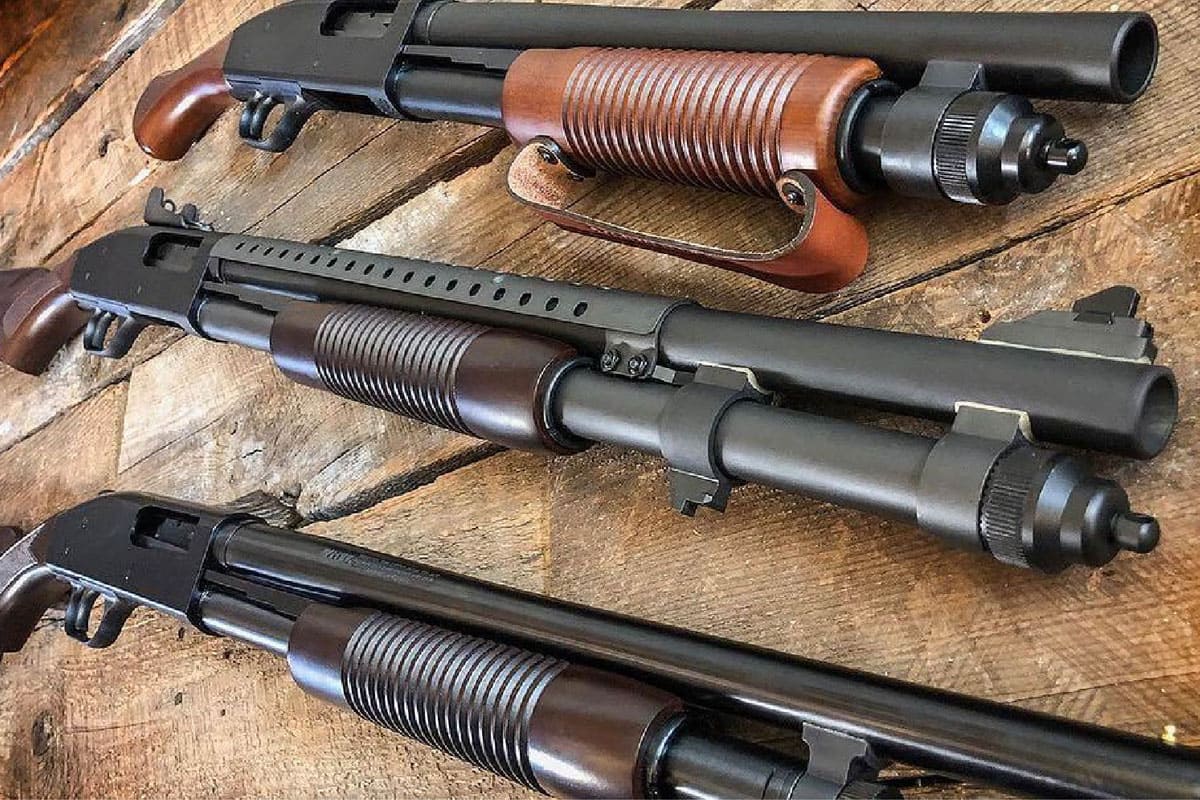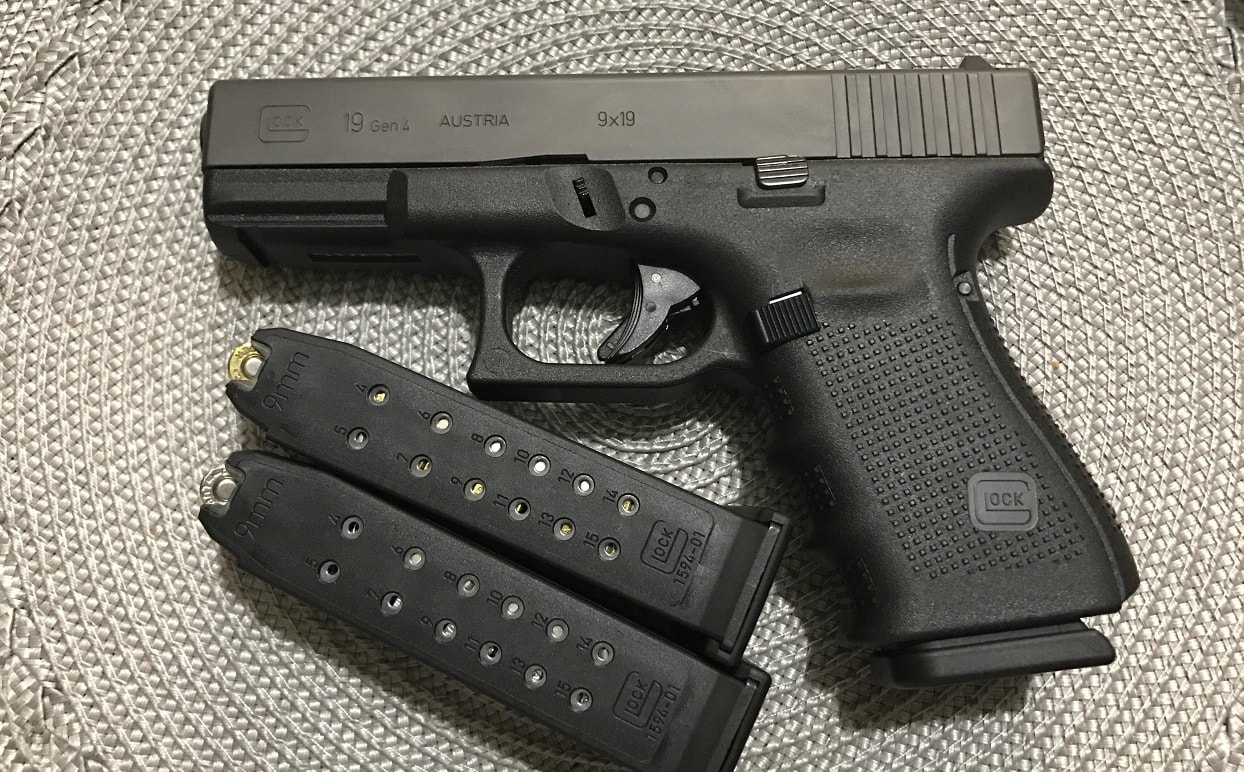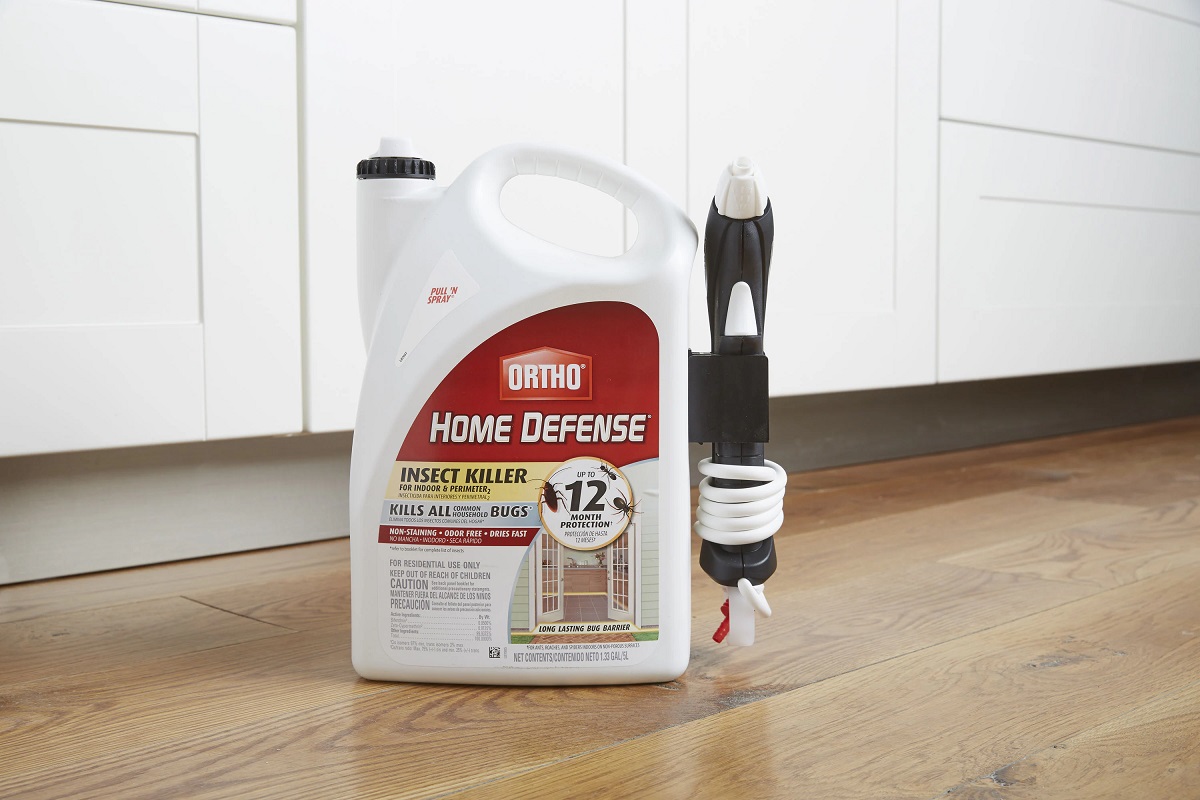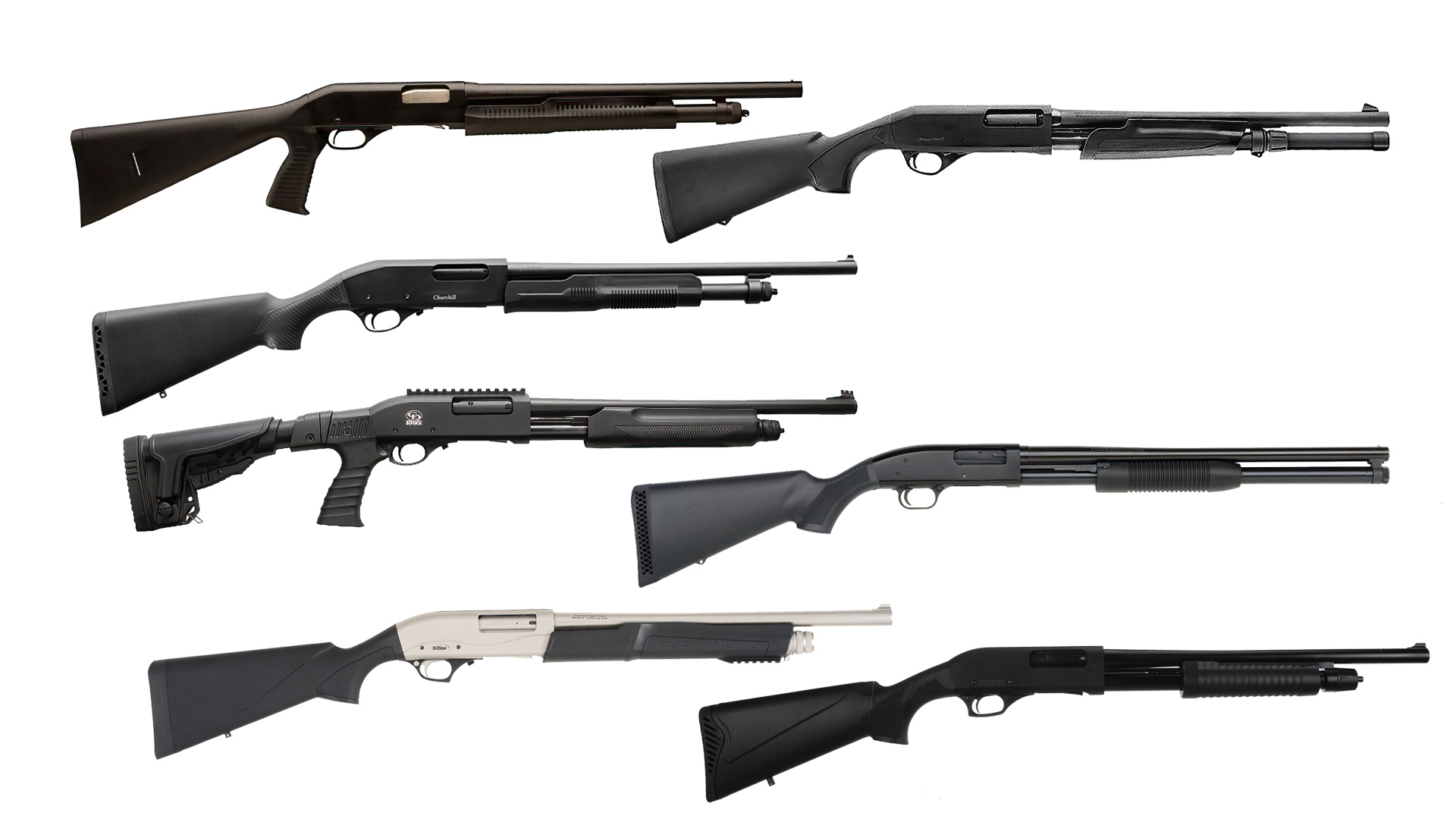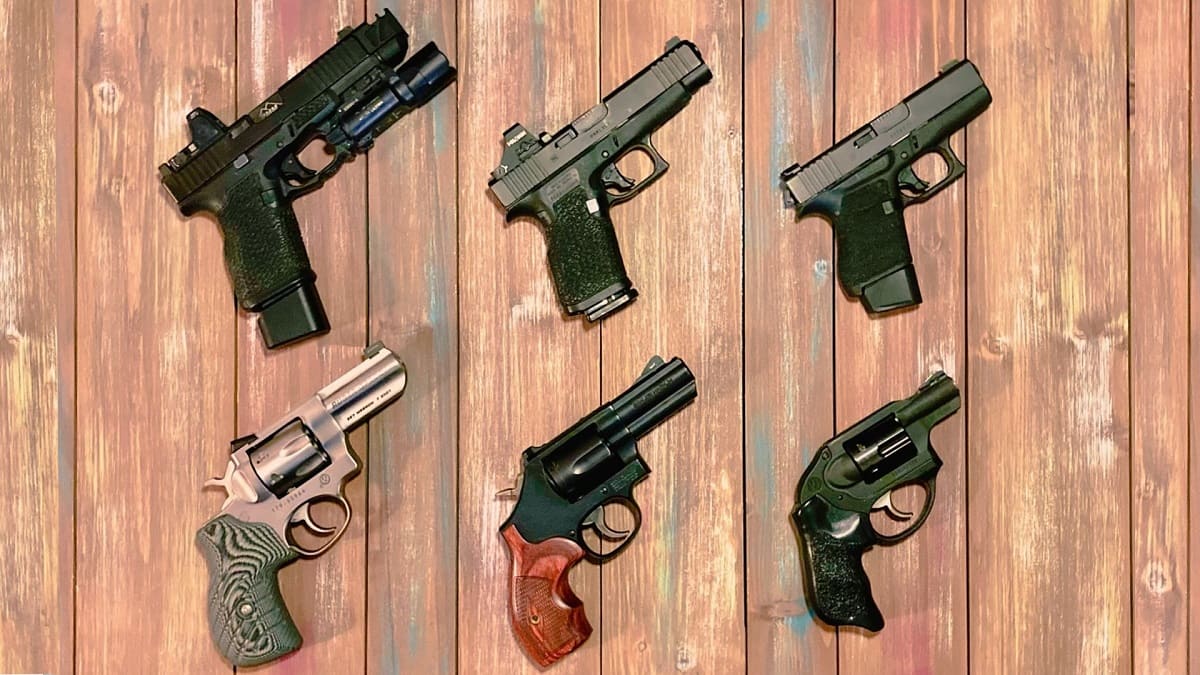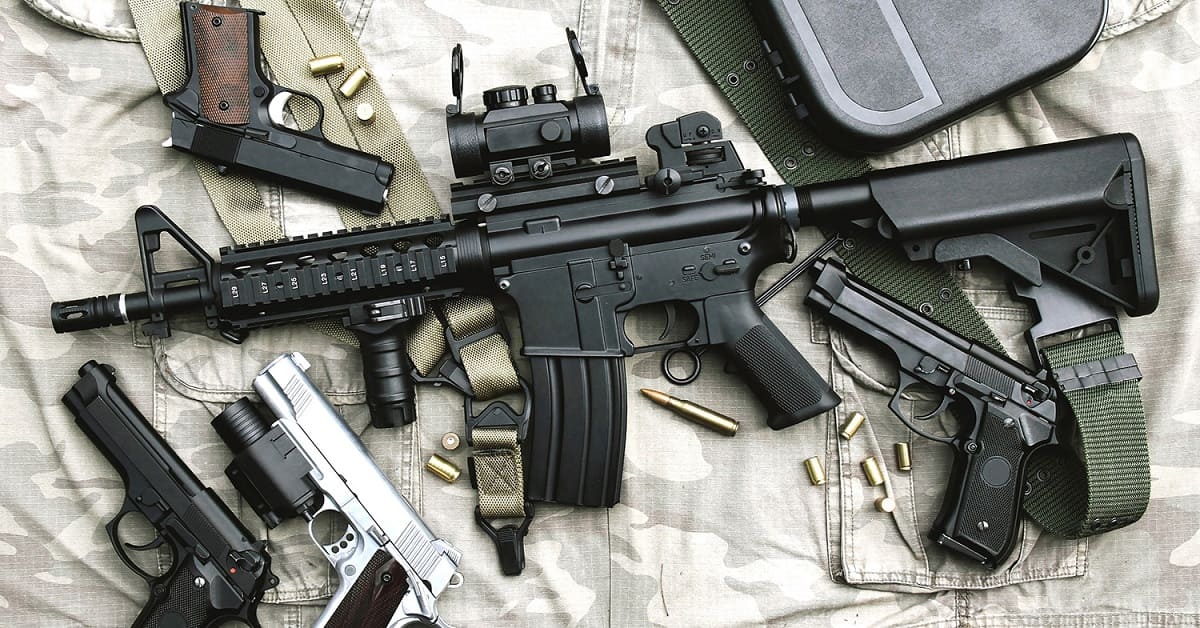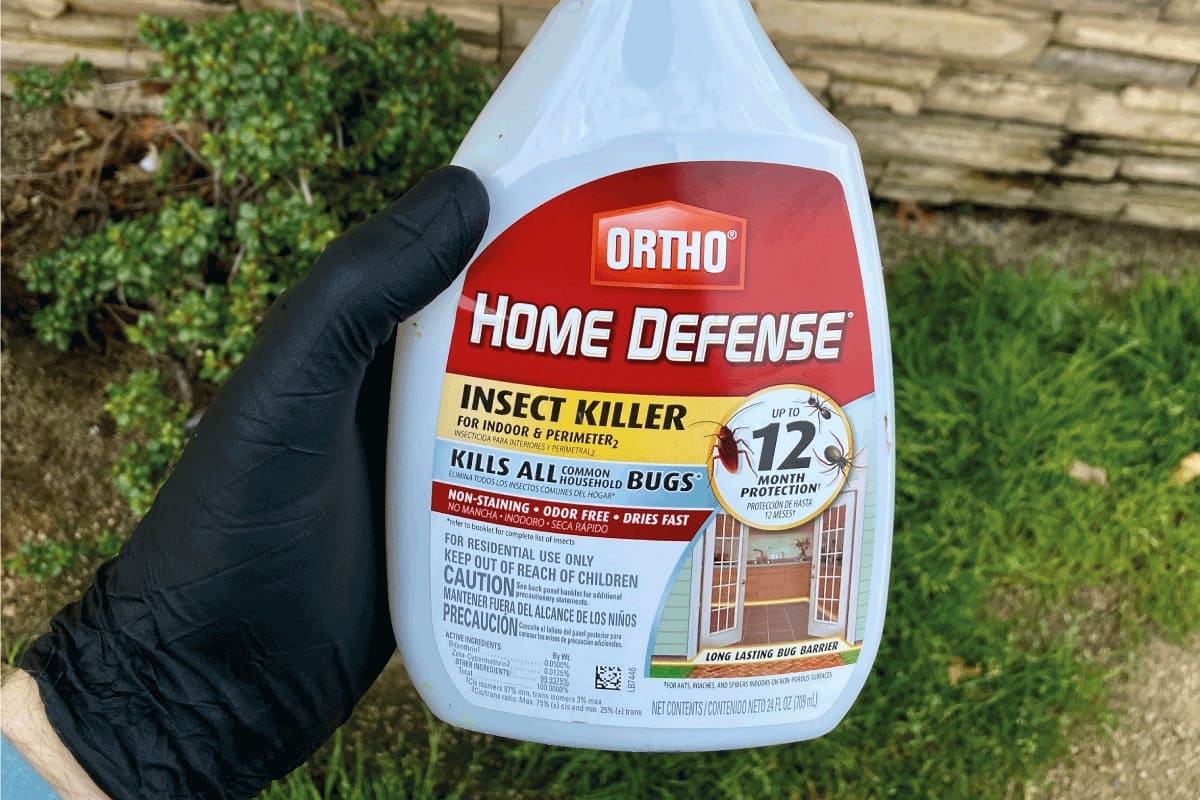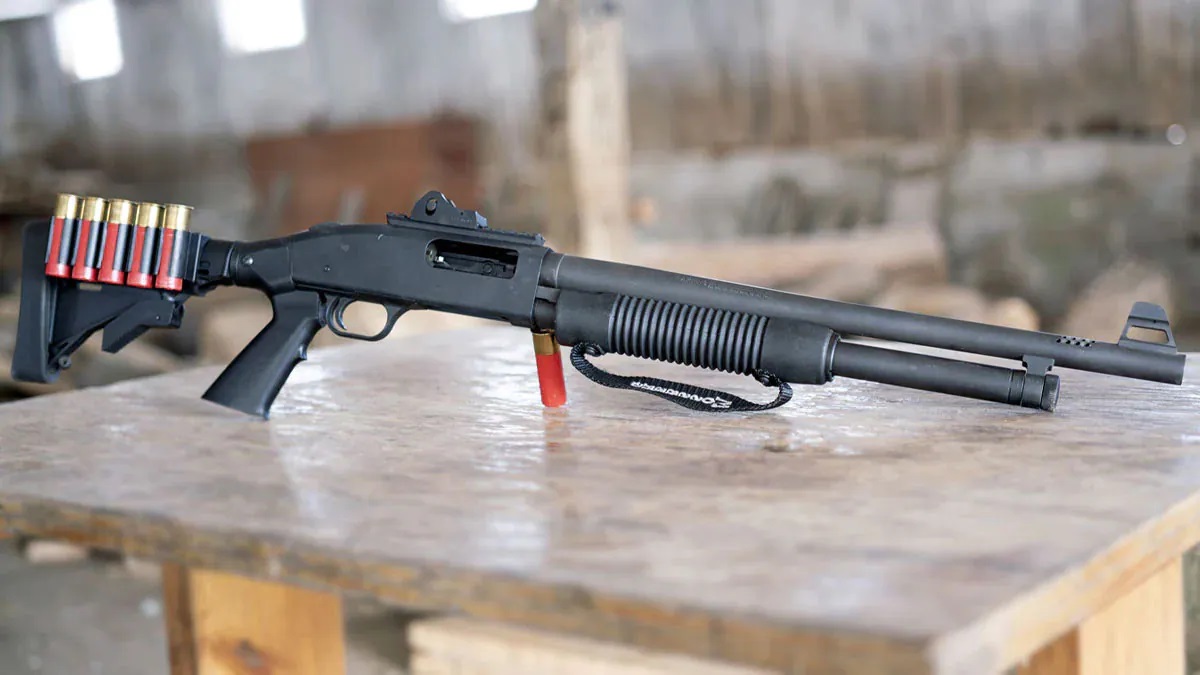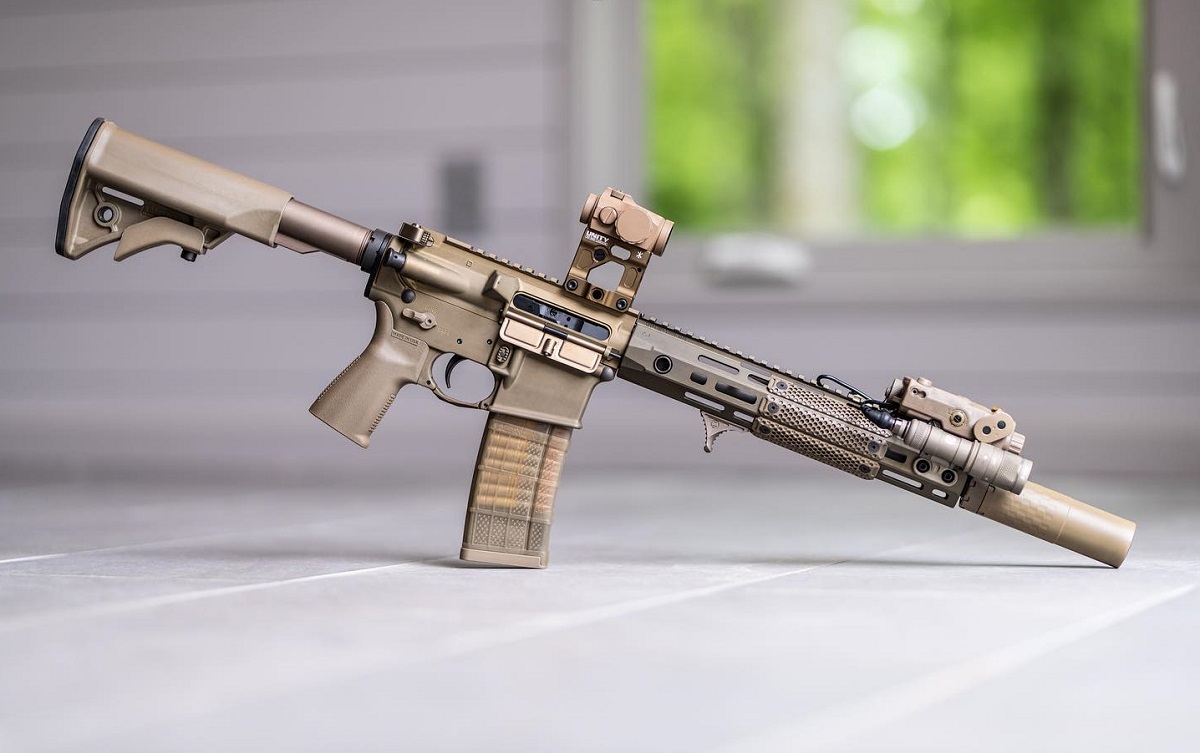Home>Home Security and Surveillance>What Size Buckshot For Home Defense
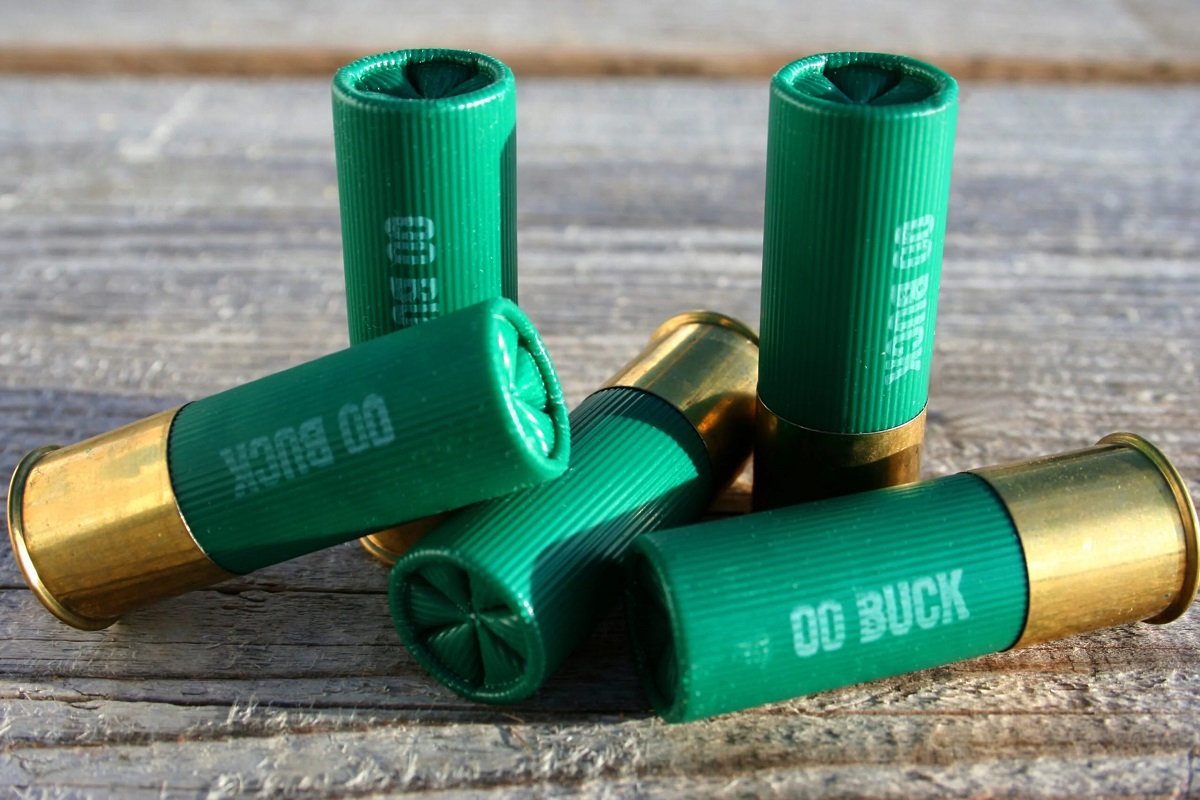

Home Security and Surveillance
What Size Buckshot For Home Defense
Modified: March 21, 2024
Looking for the best buckshot size for home defense? Learn about home security and surveillance options to protect your loved ones.
(Many of the links in this article redirect to a specific reviewed product. Your purchase of these products through affiliate links helps to generate commission for Storables.com, at no extra cost. Learn more)
Introduction
Welcome to our comprehensive guide on buckshot size for home defense. When it comes to protecting your home and loved ones, having the right ammunition is crucial. Buckshot is a popular choice among homeowners for its effectiveness in stopping threats at close range. However, choosing the right size of buckshot can make a significant difference in its performance.
In this article, we will delve into the different sizes of buckshot available for home defense and discuss the factors to consider when selecting the appropriate size for your needs. We’ll also explore the various options you have beyond traditional buckshot. So, let’s jump right in!
Key Takeaways:
- Choose the right buckshot size for home defense based on factors like engagement distance, over-penetration risk, and recoil control. Consider personal comfort and practice responsible firearms handling.
- Understanding shot placement and penetration considerations is crucial for maximizing the effectiveness of buckshot in home defense. Prioritize safety, practice, and seek professional guidance for informed decision-making.
Understanding Buckshot for Home Defense
Buckshot is a type of shotgun ammunition that consists of multiple lead or steel balls, also known as pellets. It is designed to be fired from a shotgun and spreads out upon leaving the barrel, creating a wider impact area. This makes it highly effective for close-quarters combat, making it a popular choice for home defense scenarios.
One of the key factors to consider when using buckshot for home defense is its stopping power. Buckshot pellets are typically larger and heavier than birdshot, which increases the damage inflicted upon the target. The goal is to stop the threat as quickly as possible to ensure the safety of yourself and your loved ones.
Another important aspect of buckshot is its ability to penetrate barriers. In a home defense situation, there may be obstacles such as walls or furniture that the pellets need to penetrate to reach the target. The size of the buckshot pellets plays a role in determining their ability to penetrate these barriers without causing excessive collateral damage.
It’s also worth noting that buckshot spreads as it travels, creating a wider pattern. This can be advantageous in close-quarters engagements where accuracy may be compromised. The wider pattern increases the likelihood of hitting the target and reduces the need for precise aim.
Now that we have a basic understanding of buckshot, let’s explore the different sizes available and the factors to consider when choosing the right size for your home defense needs.
Factors to Consider when Choosing Buckshot Size
When selecting the appropriate size of buckshot for home defense, there are several factors to consider. These factors include the distance at which the engagement is likely to occur, the potential for over-penetration, and your ability to control recoil. Let’s examine each of these factors in more detail:
- Engagement Distance: The distance between you and the potential threat is a crucial consideration when choosing buckshot size. Smaller buckshot sizes, such as #4 or #1 buckshot, tend to spread less and are more effective at longer distances. Conversely, larger buckshot sizes like 00 or 000 are better suited for closer engagements.
- Over-penetration: One concern with using buckshot for home defense is the risk of over-penetration, where the pellets pass through the threat and continue traveling, potentially endangering innocent bystanders. The size of the buckshot pellets can influence the likelihood of over-penetration. Smaller buckshot sizes may be less likely to penetrate walls or barriers, reducing the risk of collateral damage.
- Recoil Control: Buckshot loads, particularly the larger sizes, can produce significant recoil when fired. It’s essential to consider your ability to control the recoil, as excessive recoil can affect accuracy and follow-up shots. Smaller buckshot sizes generally generate less recoil, making them more manageable for individuals with limited firearms experience or those who may have difficulty managing recoil.
- Personal Preference and Comfort: Ultimately, personal preference and comfort play a role in selecting the buckshot size for home defense. Some individuals may feel more confident and comfortable using larger buckshot sizes, while others may prefer the tighter pattern and reduced recoil of smaller buckshot sizes.
It’s important to note that there is no one-size-fits-all answer when it comes to choosing the right buckshot size for home defense. It’s best to consider these factors and choose a size that aligns with your specific needs and circumstances.
00 Buckshot
00 buckshot, also known as double-aught buckshot, is one of the most popular and widely used sizes for home defense. The “00” designation refers to the size of the pellets, with each pellet typically measuring around .33 inches (8.4mm) in diameter. It is larger than most other buckshot sizes and offers excellent stopping power.
With its larger pellets, 00 buckshot delivers a significant amount of energy upon impact, making it highly effective in stopping threats. It can cause substantial tissue damage and is capable of penetrating deep into the target, increasing the chances of stopping a threat with one shot.
However, it’s crucial to consider the potential for over-penetration when using 00 buckshot. The energy delivered by each pellet can cause them to pass through walls or other obstacles, posing a risk to innocent bystanders. Therefore, it’s important to be mindful of your surroundings and ensure proper target identification to avoid unintended consequences.
Due to its power, 00 buckshot is most effective in close-quarters engagements. At longer distances, the spread of the pellets increases, reducing the concentration of energy on the target. Therefore, it is recommended to use 00 buckshot in situations where the engagement distance is relatively short.
Regarding recoil, 00 buckshot loads can generate significant recoil due to the larger pellets and higher muzzle velocity. This recoil can impact accuracy and follow-up shots. It’s essential to practice and ensure proper firearms handling techniques to manage recoil effectively.
Overall, 00 buckshot is a popular choice for home defense due to its stopping power and effectiveness at close range. However, it’s important to carefully consider the potential for over-penetration and practice proper firearms safety protocols when using this size of buckshot.
000 Buckshot
When it comes to sheer stopping power, 000 buckshot is one of the largest and most powerful sizes available for home defense. The “000” designation indicates the size of the pellets, with each pellet measuring around .36 inches (9.1mm) in diameter. These larger pellets deliver a tremendous amount of energy upon impact.
000 buckshot is often chosen when maximum stopping power is desired. The larger pellets create devastating wound channels and can cause significant tissue damage to an assailant. It is highly effective at close range and has the potential to incapacitate a threat with just one or two well-placed shots.
With such power, however, comes the need for consideration regarding over-penetration. The energy and size of the pellets increase the risk of them passing through walls or barriers, potentially endangering others. As with any buckshot size, it is crucial to be aware of your surroundings, use proper target identification, and consider the potential for collateral damage.
Due to the larger size of the pellets, 000 buckshot tends to have a wider spread and less range compared to smaller buckshot sizes. It is most effective in close-quarters situations where engagements are expected to be at a short distance. Its wider spread can compensate for slight aiming errors, increasing the likelihood of hitting the target under stressful conditions.
Recoil can be a significant consideration when using 000 buckshot. The larger pellets, coupled with higher muzzle velocities, result in increased recoil that may impact accuracy and follow-up shots. Proper firearms handling and recoil management techniques, such as stance and grip, are crucial for maintaining control and accuracy.
While 000 buckshot offers exceptional stopping power, it may not be suitable for all individuals due to its significant recoil and potential for over-penetration. It is important to evaluate and consider your personal abilities, comfort level, and the unique circumstances of your home defense plan when deciding on the appropriate buckshot size to use.
Use 00 buckshot for home defense. It has good stopping power and less chance of over-penetration. Always practice safe handling and know your local laws.
#1 Buckshot
#1 buckshot is a versatile buckshot size that strikes a balance between pellet size and pellet count. The “#1” designation represents the size of the pellets, with each pellet measuring around .30 inches (7.6mm) in diameter. It offers a good combination of stopping power and pellet count, making it a popular choice for home defense.
With #1 buckshot, you benefit from a larger pellet size compared to smaller buckshot sizes like #4 or #1, which results in increased stopping power. The pellets are capable of inflicting substantial tissue damage to a threat, increasing the likelihood of incapacitating them quickly.
At the same time, #1 buckshot maintains a decent pellet count, usually ranging from 16 to 20 pellets in a standard 2 3/4-inch shell. This gives you a higher number of projectiles per shot compared to larger buckshot sizes like 00 or 000, which can increase the chances of hitting your target.
When it comes to penetration, #1 buckshot strikes a balance. It can deliver a good amount of energy to stop a threat without excessive over-penetration. However, it’s important to remember that the distance to your target and the composition of barriers can still affect penetration. It’s crucial to be aware of your surroundings and understand the potential for collateral damage.
Regarding recoil, #1 buckshot generally produces manageable recoil. While it may have slightly more recoil than smaller buckshot sizes, it is still controllable, allowing for accurate follow-up shots when necessary. Regular practice and proper firearms handling techniques are essential for recoil management.
#1 buckshot is particularly suitable for home defense scenarios where the engagement distance may vary. It strikes a balance between spread and penetration, making it effective in both close-quarters situations and those where targets are slightly farther away.
Overall, #1 buckshot provides a combination of stopping power, pellet count, and versatility, making it a popular choice for home defense. Consider your specific needs and circumstances when selecting the appropriate buckshot size, and always prioritize safety and proper firearms training.
#4 Buckshot
#4 buckshot is a smaller, yet still effective, buckshot size frequently used for home defense. The “#4” designation represents the size of the pellets, with each pellet measuring around .24 inches (6.1mm) in diameter. While smaller in size compared to other buckshot sizes, #4 buckshot offers some unique advantages.
One of the notable benefits of #4 buckshot is its increased pellet count. A standard 2 3/4-inch shell typically contains around 21 pellets. This higher pellet count increases the chances of hitting the target, compensating for the smaller individual pellet size.
Although smaller in size, #4 buckshot still possesses sufficient stopping power within its effective range. The pellets can cause significant damage to a threat at close range, making it an effective choice for home defense scenarios. However, it’s important to note that the effectiveness of #4 buckshot diminishes at longer distances due to the smaller pellet size and reduced energy transfer.
One advantage of #4 buckshot is its reduced risk of over-penetration compared to larger buckshot sizes. The smaller size and limited energy of the pellets decrease the likelihood of them passing through walls or barriers. This can provide a higher level of safety for occupants of other rooms or neighboring properties.
When it comes to recoil, #4 buckshot typically produces lighter recoil compared to larger buckshot sizes. The reduced recoil can be more manageable, allowing for quicker follow-up shots and better accuracy. This characteristic makes it an excellent choice for individuals who may have difficulty managing recoil or require a more forgiving shooting experience.
#4 buckshot is particularly suited for home defense scenarios where there’s a concern for over-penetration and a need for greater control over recoil. It is effective in close-quarter engagements and can be a reliable choice for individuals who prioritize accuracy and follow-up shots.
Ultimately, the selection of #4 buckshot depends on your specific needs and preferences. Consider factors such as engagement distances, over-penetration risks, recoil control, and personal comfort when choosing the appropriate buckshot size for your home defense needs.
Other Buckshot Options
While 00, 000, #1, and #4 buckshot are the most commonly used sizes for home defense, there are other buckshot options available that may suit specific needs or preferences. Let’s explore some of these alternative buckshot sizes:
- #1 Buckshot: This is a slightly smaller version of #1 buckshot, typically measuring around .27 inches (6.9mm) in diameter. It offers a balance between pellet size and pellet count, providing adequate stopping power and a higher number of projectiles per shot.
- #3 Buckshot: Falling between #1 and #4, #3 buckshot has pellets that measure around .25 inches (6.4mm) in diameter. It offers a compromise between pellet size, pellet count, and effective range, making it suitable for various home defense situations.
- #2 Buckshot: Larger than #3 buckshot but smaller than #1, #2 buckshot has pellets measuring around .27 inches (6.9mm) in diameter. It provides a good balance of penetration, stopping power, and pellet count, making it a versatile option for home defense.
- #00 Buckshot Magnum: This variation of 00 buckshot features boosted muzzle velocity and increased energy. The higher velocity enhances its effectiveness and extends the effective range. It can be a suitable choice for those who prioritize maximum stopping power and increased range.
- Reduced Recoil Buckshot: Some manufacturers offer buckshot loads specifically designed with reduced recoil. These loads can help individuals with limited firearm experience or those sensitive to recoil feel more comfortable and in control while still maintaining an effective level of stopping power.
When considering these alternative buckshot options, it’s important to assess their specific characteristics and how they align with your needs and circumstances. Factors such as engagement distances, over-penetration risks, recoil control, and personal comfort should guide your decision-making process.
Remember that each buckshot size comes with its own trade-offs, and there is no one-size-fits-all solution. It’s always a good idea to consult with experts, seek professional advice, and conduct proper testing to determine the most suitable buckshot size for your home defense needs.
Shot Placement and Penetration Considerations
When it comes to using buckshot for home defense, shot placement and penetration are critical factors to consider. They directly impact the effectiveness of the ammunition and the safety of everyone involved. Let’s explore these considerations in more detail:
Shot Placement: Proper shot placement is essential for maximizing the effectiveness of buckshot. Aim for the center mass of the target, primarily focusing on the vital areas such as the chest and head. This increases the likelihood of delivering a disabling or incapacitating shot. Practice and familiarity with your firearm are crucial to ensure accurate shot placement, especially in high-stress situations.
Penetration: Understanding the potential for penetration is crucial to avoid unintended collateral damage. Buckshot, depending on the size and type, has varying levels of penetration capability. Consider the layout of your home and the potential presence of walls, doors, or furniture that may need to be penetrated to stop a threat. Balancing effective stopping power with minimizing the risk of over-penetration is essential to ensure the safety of innocent bystanders and property.
Keep in mind that different materials may affect the penetration capability of buckshot. For instance, drywall or hollow-core doors are less likely to stop buckshot compared to solid wood or heavy furniture. Conducting realistic scenarios and understanding the penetration capabilities of your chosen buckshot size is crucial to make informed decisions during a home defense situation.
It’s important to remember that every home defense situation is unique, and the circumstances can vary greatly. Factors such as the size and structure of your home, potential barriers, and the presence of other occupants must be carefully considered when utilizing buckshot for self-defense.
Proper training and practice are imperative to develop the necessary skills to make fast and accurate shot placement decisions. Seek out professional guidance and training to improve your technique and decision-making abilities under stress.
Additionally, it’s recommended to test different buckshot loads and sizes in realistic scenarios, preferably at a certified shooting range, to understand their performance and penetration characteristics. This will help you make an informed choice based on your specific needs and circumstances.
Remember, shot placement and penetration considerations should always prioritize the safety of yourself and others. Be aware of your surroundings, practice responsible firearms handling, and ensure appropriate target identification to minimize the risk of accidental injury or property damage.
Read more: What Are Home Defense Rounds
Conclusion
Choosing the right buckshot size for home defense is a critical decision that can greatly impact your ability to protect yourself and your loved ones. Understanding the characteristics and considerations of different buckshot sizes is essential for making an informed choice.
When evaluating buckshot sizes such as 00, 000, #1, #4, and others, factors such as engagement distance, over-penetration risk, and recoil control should be taken into account. Each buckshot size has its own advantages and trade-offs, and there is no one-size-fits-all solution.
00 buckshot offers exceptional stopping power for close-quarters engagements but carries a higher risk of over-penetration. 000 buckshot delivers tremendous stopping power but may have more recoil and limited range. #1 buckshot strikes a balance between pellet size and count, making it versatile for various scenarios. #4 buckshot offers increased pellet count and reduced risk of over-penetration but may have limited range. Additionally, there are other buckshot options available, including #1, #3, #2, and reduced recoil buckshot.
Shot placement and penetration considerations play a crucial role in the effectiveness and safety of using buckshot for home defense. Proper shot placement on vital areas of the target is vital, while understanding the potential for penetration helps reduce the risk of unintended collateral damage.
It’s important to practice and train with your chosen buckshot size, understand its performance characteristics, and ensure proper firearms handling techniques. Regular practice will enhance your accuracy, shot placement, and decision-making abilities in high-stress situations.
Ultimately, the most suitable buckshot size for your home defense needs will depend on your unique circumstances, personal preferences, and the specific layout and structure of your home. Consult with experts, seek professional guidance, and conduct proper testing to make an informed decision.
In conclusion, selecting the right buckshot size involves considering factors such as stopping power, penetration, recoil, and personal comfort. By having a thorough understanding of these factors, practicing responsible firearms handling, and keeping safety as the highest priority, you can confidently choose the ideal buckshot size for your home defense requirements.
Frequently Asked Questions about What Size Buckshot For Home Defense
Was this page helpful?
At Storables.com, we guarantee accurate and reliable information. Our content, validated by Expert Board Contributors, is crafted following stringent Editorial Policies. We're committed to providing you with well-researched, expert-backed insights for all your informational needs.
